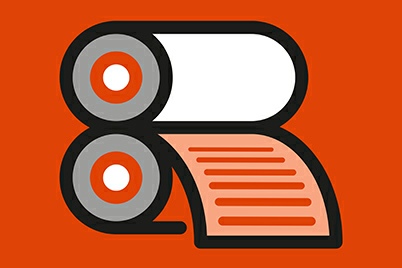

07584-


THE FINE PRINT
Printing -
Printing has been around since before 220AD, with the earliest known method being woodcut, where a print is taken from a negative image carved out of a hardwood surface. Printing has advanced considerably since this time and continues to evolve towards the future and beyond. This article explores the seven most well-
1. Offset Lithography
Offset lithography can also be known as offset printing or litho printing. It is a widely used method of mass production printing. Printing plates made from aluminium contain the image that is to be printed. The plate is inked and then the image is transferred or “offset” from the plate to a rubber blanket or roller, then to the printing surface. This process is combined with the lithographic technique which is based on the repulsion of oil and water. The printing plate obtains ink from the roller, whereas the non-
This process is great for reproducing high quality images and can be used for small or high volume runs for items such as books, fabrics and stationery. Also, because the rollers are flexible and the metal plates do not come into contact with the printed surface, this means that substrates such as rough paper or canvas can be used without any compromise on quality.
2. Flexography
Flexography, often abbreviated to flexo printing is most commonly used for packaging, but also can be used for paper & plastic bags, newspapers and disposable cups. A flexo print is created using a negative of the required image as a three-
3. Digital Printing
Digital printing is a modern method of printing that covers anything from inkjets to laser printers. In this process print files are sent directly to the printer reducing the need for expensive printing plates. Unless high volumes are required, this process is a more cost-
4. Large Format Printing
Large format printing produces prints at the maximum roll width. For maximum impact this gives a much bigger print area than conventional digital printing. Rather than printing onto individual sheets, large format printing involves large rolls of paper fed into the machine. This method of printing is suitable for building wraps, billboards and banners.
5. Screen Printing
Screen printing is a print making technique that creates a sharp-
6. 3D Printing
With its introduction in the 1980’s, 3D printing has allowed three dimensional objects to be printed in various shapes and sizes. The objects are printed using data from an Additive Manufacturing File (AMF). Additive compound mixtures are then fused together to produce the final printed 3D object. 3D printers are now becoming increasingly more sophisticated allowing not only commercial printing to take place, but also domestic printers to print objects in the home. 3D printers are often used for promotional and marketing items, toys and engineering parts.
7. LED UV Printing
This process is becoming increasingly popular due to its high quality and quick turnaround times. LED UV printing is based on digital printing, the difference being that it uses UV lights to dry or cure the ink making the drying process almost instantaneous. It is also eco-
Hopefully this article gives you a good idea of the range of print methods that are available, what types of items or collateral these printing processes are best suited for, and whether they are best for short or long print runs.
Please note that the views, thoughts, and opinions expressed in this article belong solely to the author, and not necessarily to any other group or individual. To ensure you are fully compliant with all current legislation, please take legal/professional advice and do not rely solely on the information provided in these articles.

Copyright © 2018-
Terms of Use | Privacy Policy, GDPR & Cookie Policy | Trading Terms





